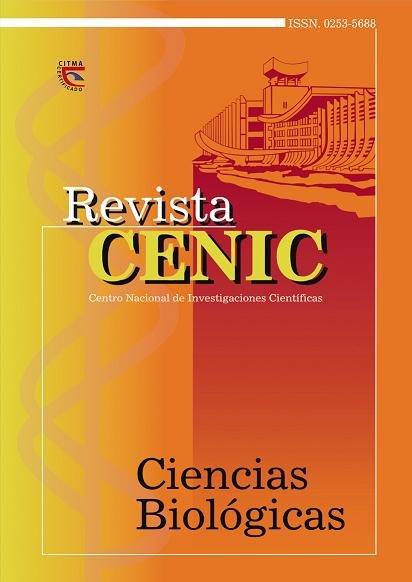Variación genética e identificación de cultivares cubanos de caña de azúcar mediante RFLP
Abstract
Restriction fragment length polymorphism (RFLP) was used to estimate molecular diversity and determine genetic pools in a group of sugarcane cultivars, directed to progenitor election, and to determine RFLP patterns more suitable for a precise identification of Cuban varieties more used in breeding. Forty five genotypes of sugarcane were studied, including 4 somaclones and 23 Cuban varieties. Polymorphism revealed by 35 probe/enzyme combinations (PEC) from 12 genomic maize and sugarcane probes in combination with 4 restriction enzyme was examined. From 239 identified bands, 84.5% were polymorphics with and average of 5.8 band per PEC. All probes showed polymorphism, while EcoR I – UMC114 combination was the most suitable for fingerprinting. One hundred and seven-teen bands partially associated within the same PEC were found, while 115 bands showed partial association among different PECs from the same probe. The average number of bands per genotype was high when one PEC per probe was employed, using the enzyme that showed more polymorphism and less number of correlated bands, however, grouping resulting from both estimates was highly coincident. The 45 genotypes were grouped in 6 molecular diversity groups, with the Cuban varieties represented mainly in 2 groups, as evidence of their high genetic similarity.
Downloads

Downloads
Published
How to Cite
Issue
Section
License
Copyright (c) 2003 Copyright (c) 2003 Revista CENIC Ciencias Biológicas.

This work is licensed under a Creative Commons Attribution-NonCommercial-ShareAlike 4.0 International License.
Los autores que publican en esta revista están de acuerdo con los siguientes términos:
Los autores conservan los derechos de autor y garantizan a la revista el derecho de ser la primera publicación del trabajo al igual que licenciado bajo una Creative Commons Atribución-NoComercial-CompartirIgual 4.0 Internacional que permite a otros compartir el trabajo con un reconocimiento de la autoría del trabajo y la publicación inicial en esta revista.
Los autores pueden establecer por separado acuerdos adicionales para la distribución no exclusiva de la versión de la obra publicada en la revista (por ejemplo, situarlo en un repositorio institucional o publicarlo en un libro), con un reconocimiento de su publicación inicial en esta revista.
Se permite y se anima a los autores a difundir sus trabajos electrónicamente (por ejemplo, en repositorios institucionales o en su propio sitio web) antes y durante el proceso de envío, ya que puede dar lugar a intercambios productivos, así como a una citación más temprana y mayor de los trabajos publicados (Véase The Effect of Open Access) (en inglés).














